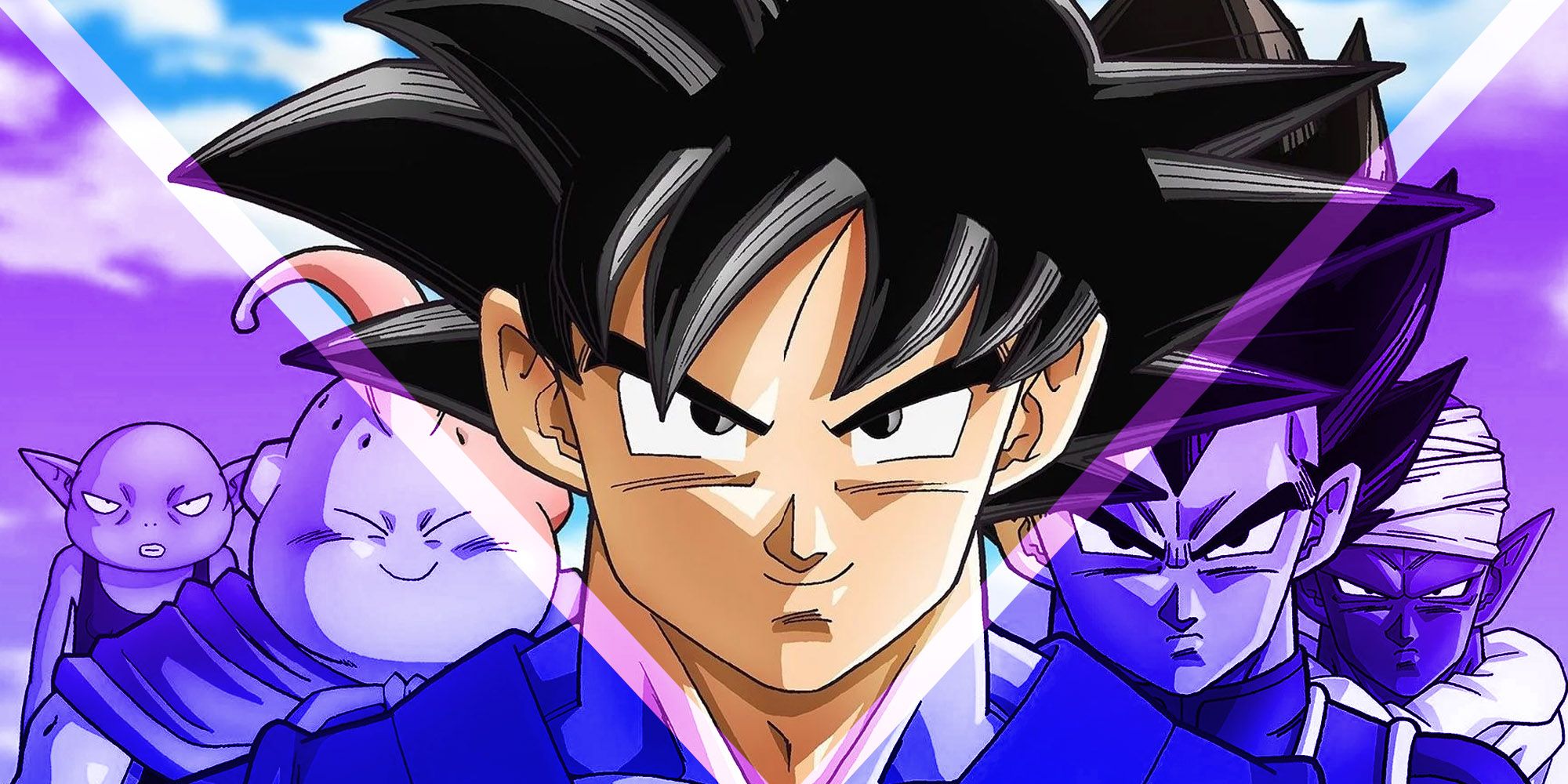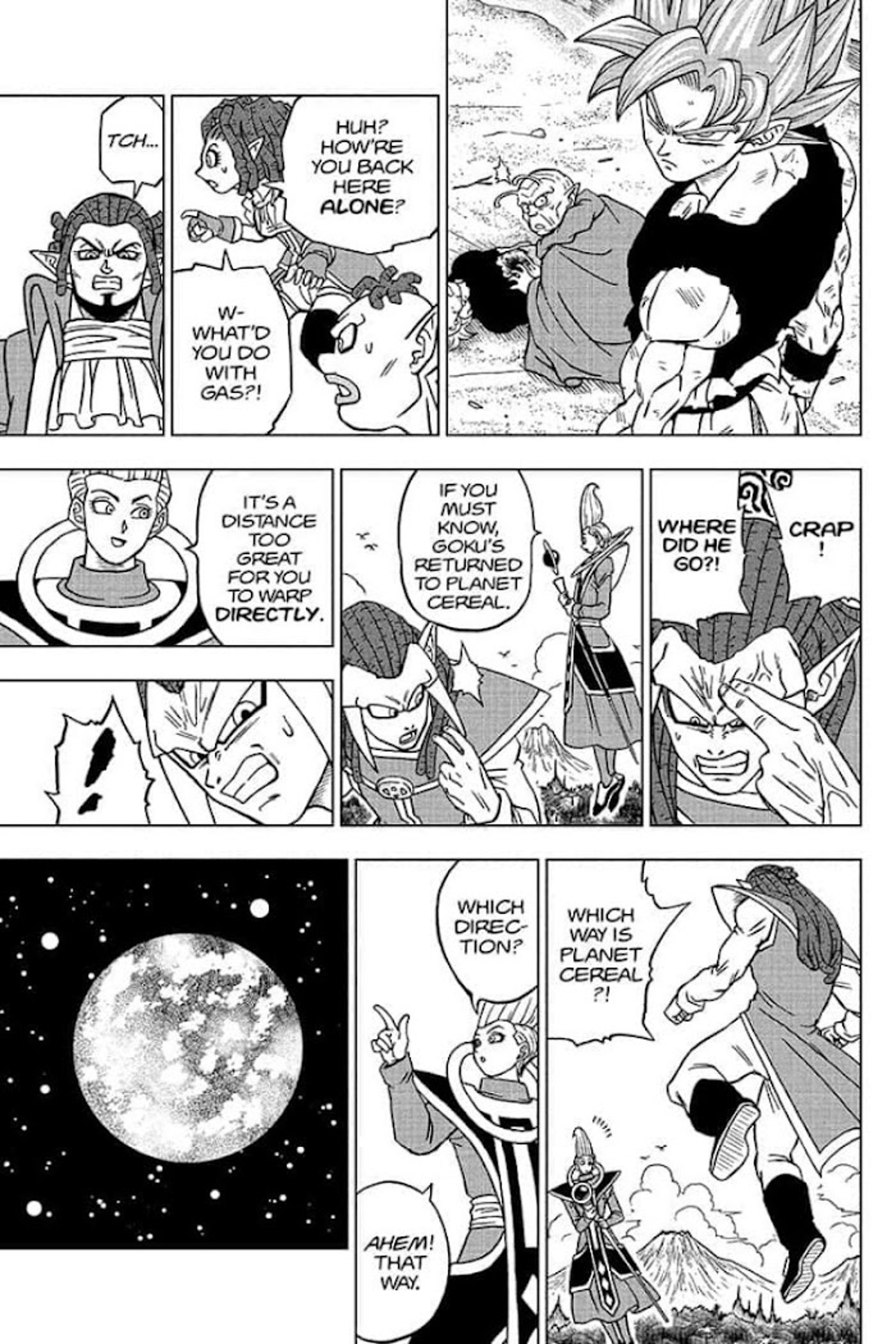Finally, Dragon Ball Super is stepping away from the formula of its predecessor Dragon Ball Z. The fight between Goku and Gas proves that the manga by Akira Toriyama and Toyotarou is making an effort to push things in a different direction, which comes as a breath of fresh air.
Dragon Ball Super began serializing in 2015, hot on the heels of the success of the two movies, Dragon Ball Z: Battle of Gods and Dragon Ball Z: Resurrection 'F', which continued the story of Goku and his friends from the Dragon Ball franchise. Set a few months after the end of Dragon Ball Z and the defeat of Majin Buu, Super follows the same formula that made its predecessor the first shonen manga to gain worldwide success and recognition. Goku, his family, and his friends are powerful heroes who are confronted with stronger and stronger opponents, which leads to them training and gaining power-ups (usually in the form of transformations). Dragon Ball Super already proved different from Z by having Vegeta, the popular antihero and Goku's rival, as a co-protagonist, and by expanding the scope of the story from Earth to galaxy-level threats, introducing the concept of multiple parallel universes.
The most recent fight, however, proves that Super is really trying hard to break Dragon Ball Z's mold. Goku and Vegeta get involved with Granolah, the last survivor from the Cerelian race that was annihilated by the Saiyans when they were working for Frieza. Granolah's desire for revenge is manipulated by a group of galactic criminals known as Heeters, who push him to fight against Goku and Vegeta, the two last surviving Saiyans, in the hope that the three will kill each other. Granolah becomes the strongest fighter in the universe using the fabled Dragon Balls to express that wish, at the expense of his life span. The younger of the Heeters, Gas, expresses the same wish after Granolah, thus becoming the most powerful warrior alive. After dispatching Granolah and previously wounding Vegeta, it is up to Goku to stop Gas, but the Saiyan is completely outmatched in terms of strength. This is where Dragon Ball Super gets creative and shows it can move away from its predecessor's clichés.
Because Gas acquires his power in an instant, he lacks the experience to use it at the best of its possibilities. Goku is a veteran warrior who has spent most of his life in life-threatening battles, and he uses his superior experience to his advantage. One of Goku's trademark techniques is Instant Transmission, which allows him to teleport instantaneously across great distances. While this gives Goku an initial edge in the fight, Gas is able to copy it, but he once again lacks the expertise to use it at best. Goku jumps from one planet to the other, making Gas follow him until they reach a faraway realm. From there, Goku warps back to planet Cereal, but Gas is unable to follow him directly because the distance is too great for his limited knowledge of Instant Transmission. This buys Goku the time to rest, regroup with his friends and think of a way of beating Gas.
Goku was never the smartest warrior and, in general, the fights in Dragon Ball Z were pretty direct affairs, with the most powerful warrior inevitably getting the upper hand. Gas' outright superiority, obtained in a way that could be considered "cheating," forces Goku to fight smarter and by doing that gives Super the chance to set up a completely different scenario compared to Z. The fight between Goku and Gas is more akin to modern shonen, where technique and tactics, rather than raw power, usually determine the outcome. With this fresh approach to its fights, Dragon Ball Super is finally breaking the mold of Dragon Ball Z.


